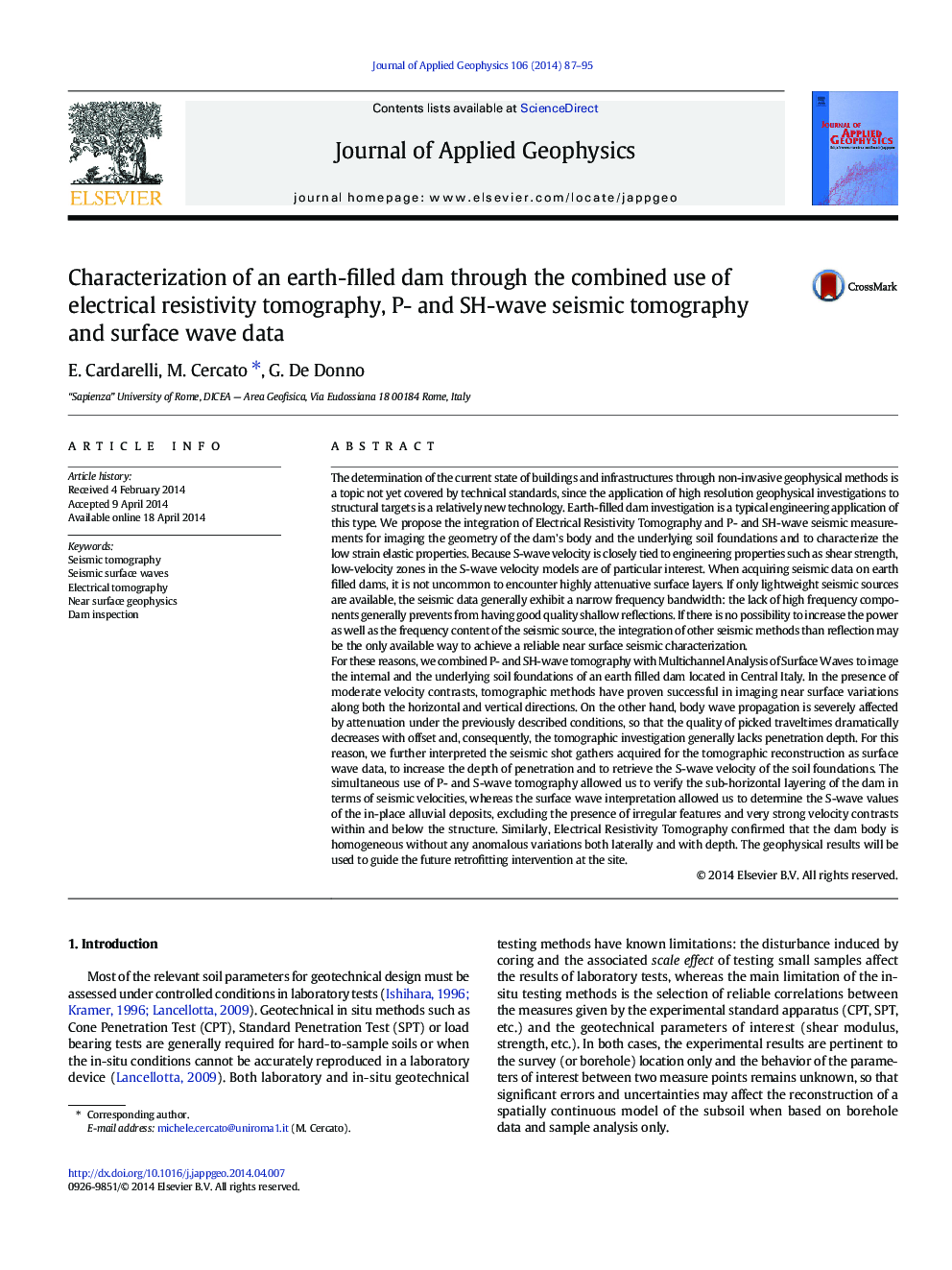| کد مقاله | کد نشریه | سال انتشار | مقاله انگلیسی | نسخه تمام متن |
|---|---|---|---|---|
| 4740134 | 1641145 | 2014 | 9 صفحه PDF | دانلود رایگان |

• Combined geophysical measurements are used to investigate an earth-filled dam.
• The embankment exhibits low electrical resistivity and high seismic attenuation.
• P- and S-wave tomography are employed for imaging the dam's body.
• The S-wave velocity of the soil foundations is retrieved by surface wave inversion.
• High quality imaging of the dam is obtained from resistivity and seismic data.
The determination of the current state of buildings and infrastructures through non-invasive geophysical methods is a topic not yet covered by technical standards, since the application of high resolution geophysical investigations to structural targets is a relatively new technology. Earth-filled dam investigation is a typical engineering application of this type. We propose the integration of Electrical Resistivity Tomography and P- and SH-wave seismic measurements for imaging the geometry of the dam's body and the underlying soil foundations and to characterize the low strain elastic properties. Because S-wave velocity is closely tied to engineering properties such as shear strength, low-velocity zones in the S-wave velocity models are of particular interest. When acquiring seismic data on earth filled dams, it is not uncommon to encounter highly attenuative surface layers. If only lightweight seismic sources are available, the seismic data generally exhibit a narrow frequency bandwidth: the lack of high frequency components generally prevents from having good quality shallow reflections. If there is no possibility to increase the power as well as the frequency content of the seismic source, the integration of other seismic methods than reflection may be the only available way to achieve a reliable near surface seismic characterization.For these reasons, we combined P- and SH-wave tomography with Multichannel Analysis of Surface Waves to image the internal and the underlying soil foundations of an earth filled dam located in Central Italy. In the presence of moderate velocity contrasts, tomographic methods have proven successful in imaging near surface variations along both the horizontal and vertical directions. On the other hand, body wave propagation is severely affected by attenuation under the previously described conditions, so that the quality of picked traveltimes dramatically decreases with offset and, consequently, the tomographic investigation generally lacks penetration depth. For this reason, we further interpreted the seismic shot gathers acquired for the tomographic reconstruction as surface wave data, to increase the depth of penetration and to retrieve the S-wave velocity of the soil foundations. The simultaneous use of P- and S-wave tomography allowed us to verify the sub-horizontal layering of the dam in terms of seismic velocities, whereas the surface wave interpretation allowed us to determine the S-wave values of the in-place alluvial deposits, excluding the presence of irregular features and very strong velocity contrasts within and below the structure. Similarly, Electrical Resistivity Tomography confirmed that the dam body is homogeneous without any anomalous variations both laterally and with depth. The geophysical results will be used to guide the future retrofitting intervention at the site.
Journal: Journal of Applied Geophysics - Volume 106, July 2014, Pages 87–95